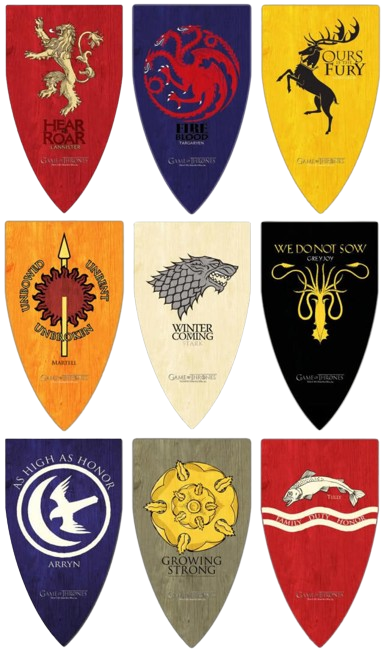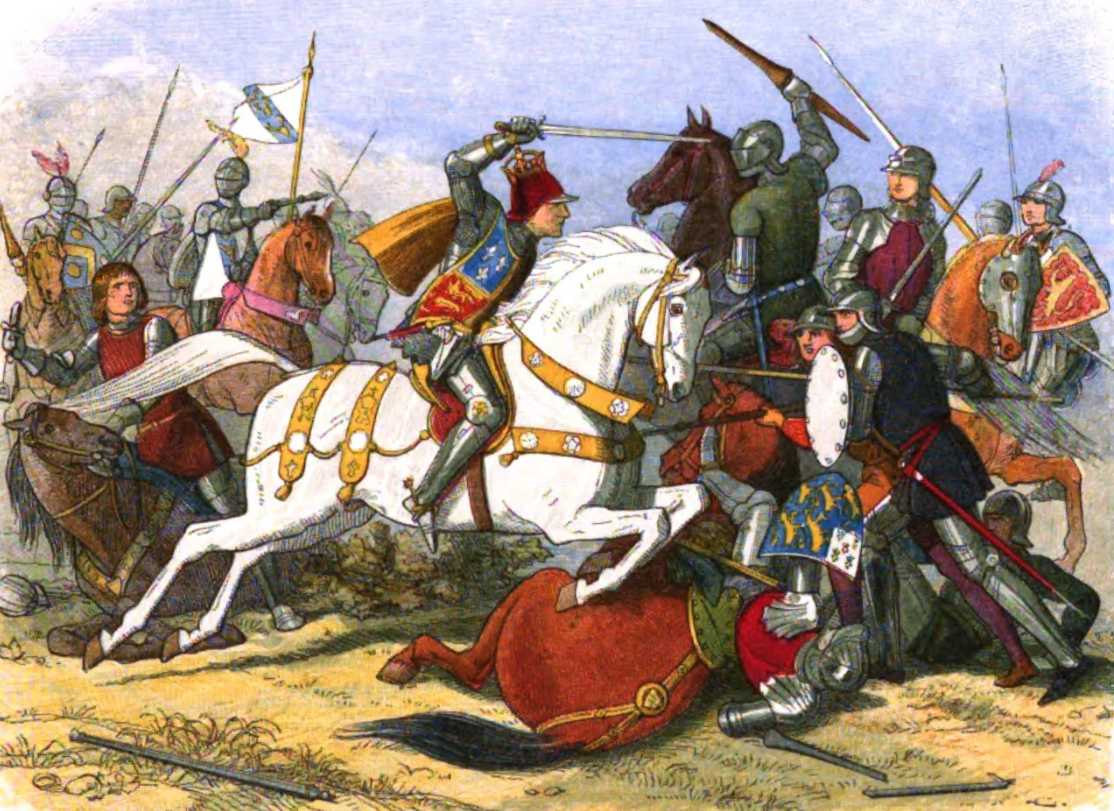
Sigils
“The medieval setting that George R. R. Martin has created is an important feature of his successful series A Song of Ice and Fire and of Game of Thrones, the television series based on it. Martin taps into the popularity of fantasy novels that use aspects of the Western European Middle Ages.” (Polack, 2017, 251)
George R. R. Martin's fiction was strongly influenced by the Middle Ages in Western Europe, in terms of creating the name characters, the costumes, the languages, the laws, the religions, and politics (Uckelman, Murphy, & Percer, 2017, 241).
The way the author built the world of Game of Thrones is a mix of historical inspiration and fantasy elements. In his storyline he blends pageantry, war, and strategy in fictional places such as Westeros, Essos, or Winterfell. However, this fictional medievalism is not an accurate depiction of the Middle Ages. Martin's universe is both historical and fiction, where he uses fantasy to make the world believable to readers (Polack, 2017, 251-252).

Sigils
One of the key aspects is the social structures through titles, blazonry, and armour. The use of titles like "Ser" and the hierarchy reflects mediaeval times, adding a layer of depth and authenticity to the book. Each noble family in Westeros is distinguished by a unique sigil, emphasising nobility, loyalty and lineage (Polack, 2017, 252-254). Furthermore, the author’s attention to detail extends to arms, armour, and clothing, which play a significant role in defining characters and their roles. While some elements like plate armour make us believe in true mediaeval aesthetics, others, such as Valyrian steel, are a mix of history and magic (Polack, 2017, 254-256).

Moreover, religion and justice are an important part of Game of Thrones. The beliefs and justice systems in the show offer insights into how specific and rich the cultures of this fantasy world can be. Martin introduces diverse religions that influence character actions and societal norms. However, the legal system depicted in the series lacks authenticity compared to historical mediaeval times. In the show, absolute power and personal justice dominate, which is different from the complex way of justice of the actual Middle Ages. During those times, the courts, juries, and legal procedures were more structured than in the show. Similarly, at the heart of the story lies family politics, reflecting the turbulent historical periods like the War of Roses. The familial relationships, power struggles, and complex alliances represent well the chaotic nature of mediaeval families (Polack, 2017, 256-257).
“Although well informed by history, Martin doesn’t try to make his world authentically mediaeval. That isn’t necessary to further the drama. Yet he does make it believably medievalesque” (Polack, 2017, 259). Game of Thrones, therefore, transcends fantasy by having historical elements with imaginative storytelling. The author's attention to detail, from social structures to religious beliefs, makes the historical context, rich and insightful.
For more information about the Game of Thrones timeline: Game of Thrones historical timeline